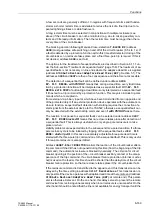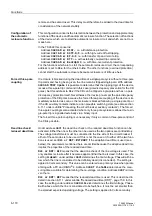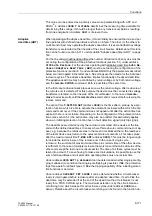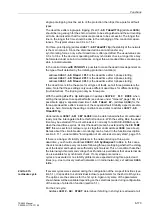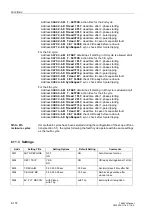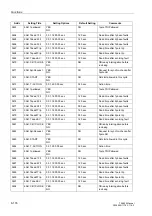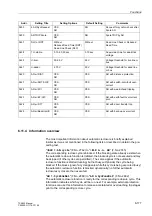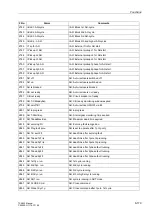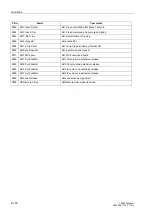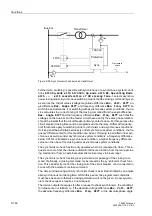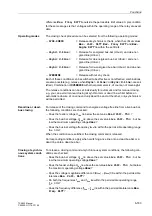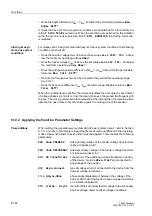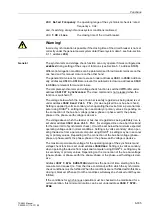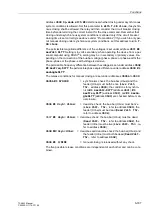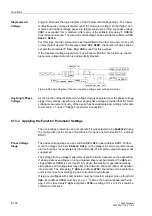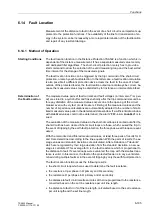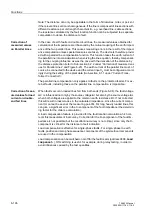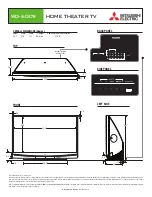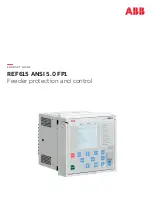
Functions
6-182
7SA522 Manual
C53000-G1176-C119-2
Figure 6-93 Synchronism check across a transformer
Furthermore, switching is possible with synchronous or asynchronous system condi-
tions (
/
2SHUDWLQJ0RGH
ZLWK
:
ZLWKFRQVLGHUDWLRQRI&%FORVLQJWLPH
-> selects asynchro-
nous closing mode). Synchronous switching means that the closing command is given
as soon as the critical values (voltage magnitude difference
, and frequency difference
) lie
within the set tolerances. For switching with asynchronous system conditions, the de-
vice calculates the correct timing of the closing command from the angle difference
and the frequency difference
such that the
voltages on the bus-bar and the feeder circuit have exactly the same phase relation-
ship at the instant that the circuit breaker primary contacts close. For this purpose the
circuit breaker closing time must be programmed into the relay. Different frequency
limit thresholds apply to switching under synchronism and asynchronous conditions:
If closing shall be permitted exclusively under synchronous system conditions, the fre-
quency difference limit for this condition can be set. If closing is permitted under syn-
chronous as well as under asynchronous system conditions, a frequency difference
below 0.01 Hz is treated as a synchronous condition, a higher frequency difference
value can then be set for closing under asynchronous system conditions.
The synchronism check function only operates when it is requested to do so. This re-
quest can come from the internal automatic reclosure function, from the manual clos-
ing command or from an external automatic reclose relay via binary input.
The synchronism check function gives permission for passage of the closing com-
mand. Optionally, a closing command my be issued by the synchronism check func-
tion. This can directly control the closing coil of the circuit breaker, or be connected in
series with the automatic reclose command.
The time window during which synchronism check is permitted is limited by an adjust-
able synchronous monitoring time. Within this period, the programmed conditions
must have been met otherwise closing permission will not be given. A new synchro-
nism check sequence requires a new request.
The device outputs messages if, after a request to check synchronism, the conditions
for release are not fulfilled, i.e. if the absolute voltage difference
the absolute frequency difference
, or the absolute phase angle
7SA522
Bus-bar
TRIP
CLOSE
U
line
U
bus
I
Protection
Sync
L+
Transformer
Discrepancy
switch
Содержание siprotec 7SA522
Страница 20: ...7SA522 Manual C53000 G1176 C119 2 ...
Страница 64: ...7SA522 Manual C53000 G1176 C119 2 ...
Страница 89: ...SIPROTEC 4 Devices 4 25 7SA522 Manual C53000 G1176 C119 2 Figure 4 20 CFC Logic example ...
Страница 408: ...7SA522 Manual C53000 G1176 C119 2 ...
Страница 456: ...7SA522 Manual C53000 G1176 C119 2 ...
Страница 516: ...7SA522 Manual C53000 G1176 C119 2 ...
Страница 620: ...Appendix B 48 ...


